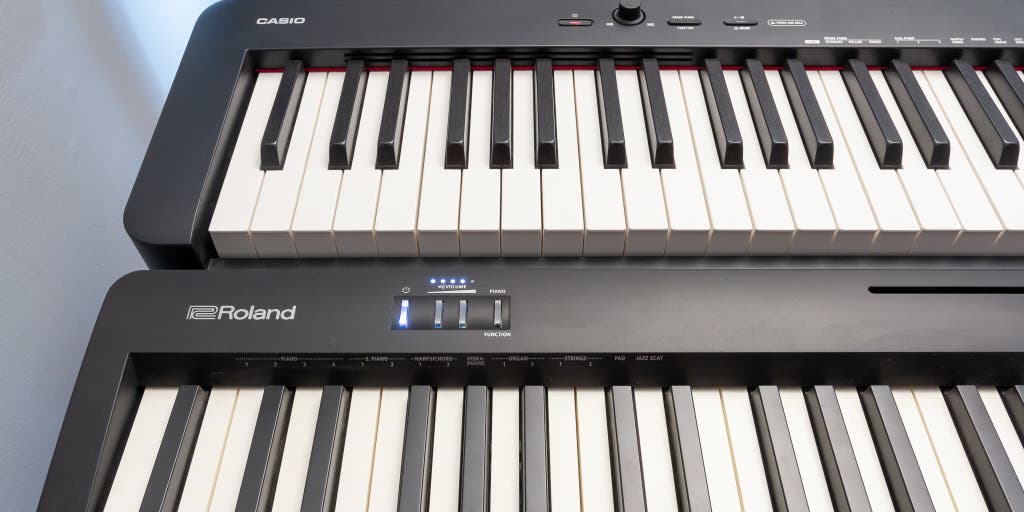1. Introduction
The digital piano and keyboard are two popular instruments used by musicians of all levels. While they both have similar characteristics, there are some key differences that set them apart. In this article we will explore the main differences between digital pianos and keyboards, including size and weight, sound quality, connectivity and MIDI, polyphony, touch sensitivity, pedals and accessories.
2. What is a Digital Piano?
A digital piano is an electronic instrument designed to replicate the sound and feel of an acoustic piano. It usually has weighted keys which give it a realistic playing action. It also typically has a range of features such as built-in speakers, multiple voices, record and playback options, as well as MIDI compatibility. Digital pianos are often used in home studios and professional recording studios as they provide excellent sound quality and offer a wide range of sounds and effects.
3. What is a Keyboard?
A keyboard is an electronic instrument that produces sound through the use of oscillators or samples. It usually has unweighted keys which give it a lighter playing action than a digital piano. Keyboards typically have more features than digital pianos such as drum pads, arpeggiators, sequencers and more. They are often used in live performances due to their portability and wide range of sounds and effects.
4. Key Differences Between Digital Piano and Keyboard
The key differences between digital pianos and keyboards include size & weight, sound quality, connectivity & MIDI, polyphony, touch sensitivity, pedals & accessories:
5. Size & Weight
Digital pianos tend to be larger than keyboards due to their weighted keys and other features such as built-in speakers. Digital pianos can weigh anywhere from 25 lbs (11 kg) to over 100 lbs (45 kg). Keyboards on the other hand tend to be much smaller and lighter than digital pianos due to their unweighted keys and lack of features such as built-in speakers. Keyboards can weigh anywhere from 10 lbs (4 kg) to 40 lbs (18 kg).
6. Sound Quality
Digital pianos typically have better sound quality than keyboards due to their weighted keys which allow for more expression when playing. Digital pianos also typically have more voices than keyboards which allow for more versatility when creating music.
7. Connectivity & MIDI
Digital pianos usually have better connectivity options than keyboards due to their MIDI compatibility which allows them to be connected to computers or other devices for recording or playback purposes. Keyboards may also have MIDI compatibility but it is not always present on all models.
8. Polyphony
Polyphony refers to the number of notes that can be played simultaneously on an instrument without any notes being cut off or dropped out due to lack of memory or processing power in the instrument itself. Digital pianos typically have higher polyphony than keyboards which allows for more complex pieces of music to be played without any notes being cut off or dropped out due to lack of memory or processing power in the instrument itself.
9 . Touch Sensitivity
Touch sensitivity refers to how the instrument responds when different amounts of pressure are applied to the keys while playing it. Digital pianos typically have better touch sensitivity than keyboards as they have weighted keys which allow for more expression when playing them compared to unweighted keys found on keyboards which do not respond well when different amounts of pressure are applied while playing them .
< h 2 >10 . Pedals & Accessories< / h 2 >
Digital pianos usually come with one or two pedals which allow you to change the dynamics or volume of your music while playing it whereas keyboards usually do not come with any pedals at all . Additionally , digital pianos often come with additional accessories such as stands , covers , headphones , etc . whereas keyboards do not .
< h 2 >11 . Conclusion< / h 2 >
In conclusion , there are many key differences between digital pianos and keyboards including size & weight , sound quality , connectivity & MIDI , polyphony , touch sensitivity , pedals & accessories . Both instruments offer great benefits depending on what type of music you want to create so it is important to consider all factors before deciding which one is right for you .

